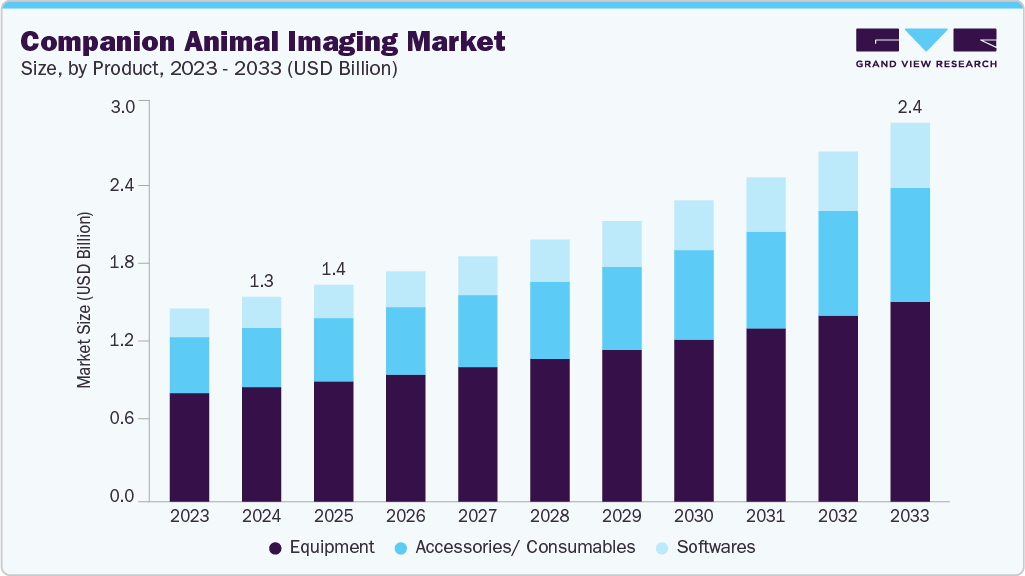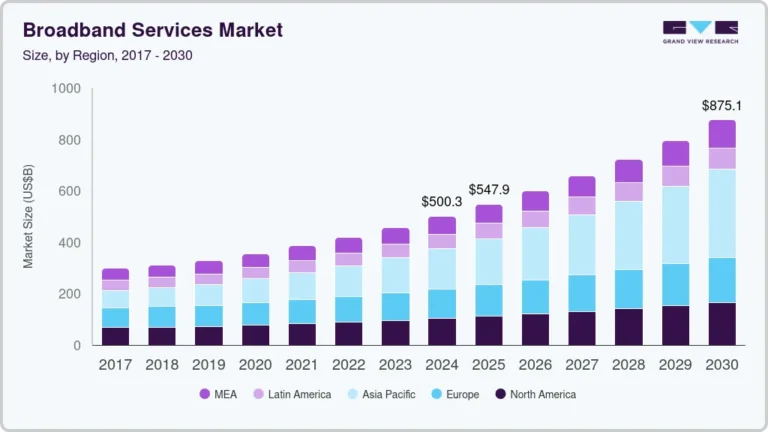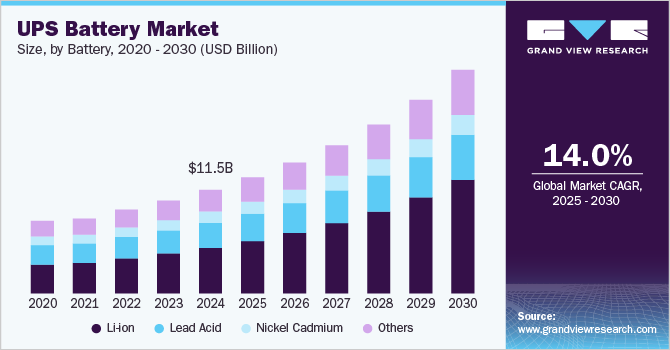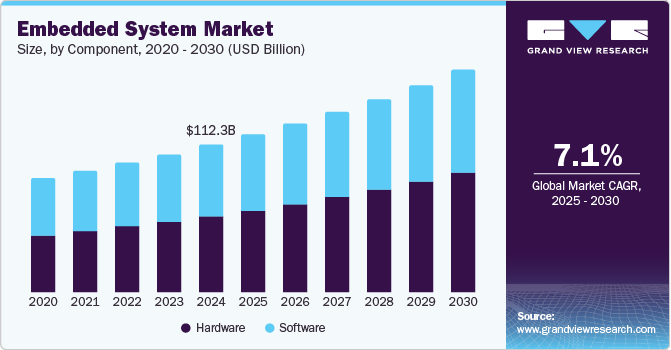Companion Animal Imaging Market Size, Share & Trends Analysis growing at a CAGR of 7.23% from 2025 to 2033

The global companion animal imaging market size was estimated at USD 1.27 billion in 2024 and is projected to reach USD 2.36 billion by 2033, growing at a CAGR of 7.23% from 2025 to 2033. The market is continuously growing, driven by rising pet ownership, increasing prevalence of chronic or zoonotic diseases, and technological advancements in imaging.
Key Market Trends & Insights
- North America companion animal imaging market held the largest share of 39.29% of the global market in 2024.
- The companion animal imaging in the U.S. is expected to grow significantly over the forecast period.
- By product, the equipment segment held the highest market share of 55.87% in 2024.
- Based on animal, the dogs segment held the highest market share in 2024.
- By type, X rays segment held the highest market share in 2024.
Market Size & Forecast
- 2024 Market Size: USD 1.27 Billion
- 2033 Projected Market Size: USD 2.36 Billion
- CAGR (2025-2033): 7.23%
- North America: Largest market in 2024
- Asia Pacific: Fastest growing market
Request a free sample copy or view report summary: https://www.grandviewresearch.com/industry-analysis/companion-animal-imaging-market-report/request/rs1
Millennials make up the largest demographic of pet owners, and approximately 66% of U.S. households own a pet. In the U.S., according to the 2024 report, approximately 65.1 million households own a dog, while 46.5 million households have a cat. The rising proportion of chronic diseases is one of the significant factors driving market growth. Chronic illnesses such as cancer, arthritis, cardiovascular diseases, and diabetes are increasingly being diagnosed in companion animals due to improved veterinary diagnostics. These conditions often require repeated and detailed imaging for effective monitoring and management.
In addition, the rising incidence of zoonotic diseases has heightened awareness about accurate diagnostic tools, pushing for widespread use of imaging to track disease progression and containment. A survey conducted in January 2024 reported the proportion of diseases by the pet owners over the lifetime period only in the U.S. The chart below illustrates various numbers of diseases along with their frequency of occurrence:
Early and precise detection through imaging is vital for both animal and public health, particularly in cases involving potentially transmissible diseases. This growing disease burden across pet populations is a primary driver boosting the need for advanced imaging solutions.
Continuous innovations in imaging technologies such as MRI, CT scans, digital radiography, and ultrasound have significantly enhanced diagnostic capabilities in veterinary medicine. These technologies now offer higher resolution, faster results, and more accurate diagnoses, facilitating better treatment decisions.






